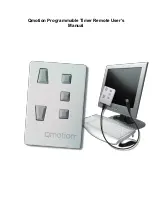
Electrical Damage - Common Causes & Recommended Prevention
Electrical damage can be caused by many different factors. Below are some of the more common causes and
some suggested methods of minimizing potential problems.
Common Causes:
Storm Activity
- lightning in your area can do damage to your instruments in different ways. The obvious
way is due to a direct or nearby strike. In addition, lightening storms, dust storms, dry snowstorms and
strong dry winds can all cause static electricity to build up on and around your external sensors. Regardless
of the cause, this built up electricity itself through the cable connecting the external sensors to
the instrument.
Power Surges
- A surge may come from the electric company’s switching generators or power grids, from
local industries or after power interruption when accumulated power suddenly surges back through AC lines.
Even the on-and-off switching of large electrical appliances, such as refrigerators or clothes dryers can
create damaging fluctuations. This is especially true with sensitive weather recording devices.
Yourself
- Are you constantly giving and/or receiving a shock every time you touch a doorknob or other
person? If so, you have a great deal of static electricity in your environment. In either case, it is possible for a
person to carry enough of a charge to damage an instrument.
Recommended Prevention:
Use Surge Protectors
- for the AC adapter, a UL 1449 rated surge protector with EMI/RFI filtering is
recommended. This rating will be clearly listed on the packaging of all good quality surge protector.
Discharge Yourself
- If the instruments are located in an environment where static electricity is a problem,
make sure that you discharge yourself before touching the instrument(s). The shock that you get from
touching a doorknob or another person can often be sufficient to damage an instrument.
CRONUS
Page 9
30 Barnet Boulevard
New Bedford, MA 02745
(508) 995-2200
ADDITIONAL INFORMATION
1.800.561.8187
info@Fluke-Direct.ca
Fluke-Direct
.ca



























